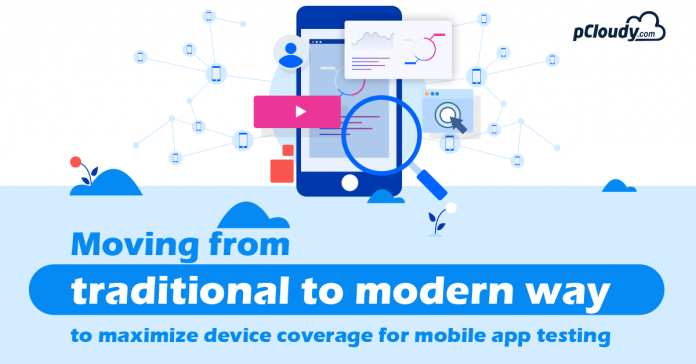Developing a mobile app that takes a lot of time and effort in itself is complex and if the app doesn’t work smoothly on some devices then it adds to more complexity. It becomes all the more difficult for mobility teams as they dread for their users to drop their ratings or uninstall their apps and ultimately a decrease in the downloads.
Device fragmentation is fiercely increasing and keeping pace with it is becoming a hard challenge for enterprise mobility. Mobility teams are forced to map the device usage contours across the world to test their apps. This will make the app function smoothly across all digital channels. This is the need of the hour in mobile app testing.
Since times are changing, mobility teams will have to think of ways to optimize the device coverage. Let us have a look at the traditional ways of optimizing device coverage.
1. Device coverage on the basis of market penetration
If an app is to be launched for a specific region, then you need to determine the set of devices which are popular in that region. You can determine that by using app purchase data and analytics. Let’s understand this through an example:
If you are launching your app in the Indian market then you need to focus on Android devices as Apple users are relatively very few. Xiaomi and Samsung have around 50% market share combined, so the most popular devices of these OEMs need to be taken into consideration.
In the picture given below, we get an overview of the worldwide share of Android OS versions from 2013 till 2018.
Device Planner makes it simple
pCloudy has made it easier for you to find out which devices should be a part of your device scope with ‘Device Planner’.
Device Planner analyzes the market data and gives you the latest stats of the market penetration of devices across the globe. You just need to select your market coverage and geography to get the list of devices you should be ideally opting for your test. You will get the list of devices with their individual market penetration.
2. Device diversity
This approach highlights the characterization of the devices based on certain mobile aspects which can be considered in formulating the testing strategy. To maximize the range of devices you want to cover for testing, you can divide devices into three categories, high end, medium end, and low end. Each category will have certain parameters that cover the entire spectrum of your device coverage. The app should be compatible with these parameters like OS version, CPU, screen size and resolution, RAM etc. You can compare the devices and make a list of 5,10 or 15 devices in each of these three categories. The pic below shows 5 high-end devices selected for group A.
As depicted above in the device matrix, you can see that the parameters of Vivo 9 and Oppo F7 are similar. We can choose any one of these devices for Group A as they are similar.
This can be done for Group B and Group C too. This way you can find out the optimum device coverage from each group, which if covered while testing will give you a better changes smooth app functionality.
The modern way of optimizing device coverage is using the data and analyzing the results. Android keeps on publishing the release updates along with notes its forums disseminates information about all the behaviour changes for all apps. These changes comprise of power management, changes in behaviour of security, Android test changes among others. They also notify about the effect on behaviour changes on newer apps focused towards the specific API level. This information can assist you not only in planning your test cases in advance but also in predicting them. You can choose the devices where there is a need to plan the testing and focus more on the functionalities that can lead to major failures. You can go through the cheat code which we have formulated by a proper analysis of the data that you can refer to before testing your apps on Android 8.0 and Android 9.0.
Time has come to prove that testing is just not enough. Prediction is the future. Data speaks a lot and it’s time to leverage it. You can use it to assist you in various ways. When predicted precisely, it can take your testing to the next level.
To know more about this stay tuned for our next blog.

